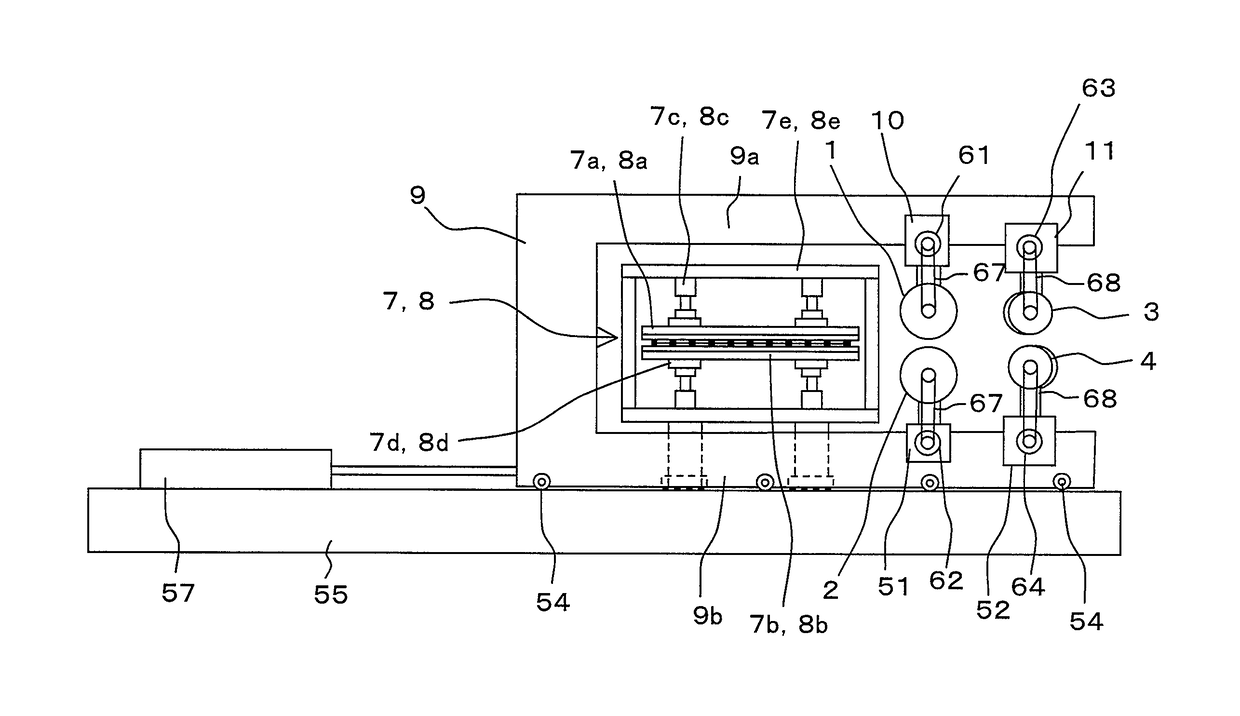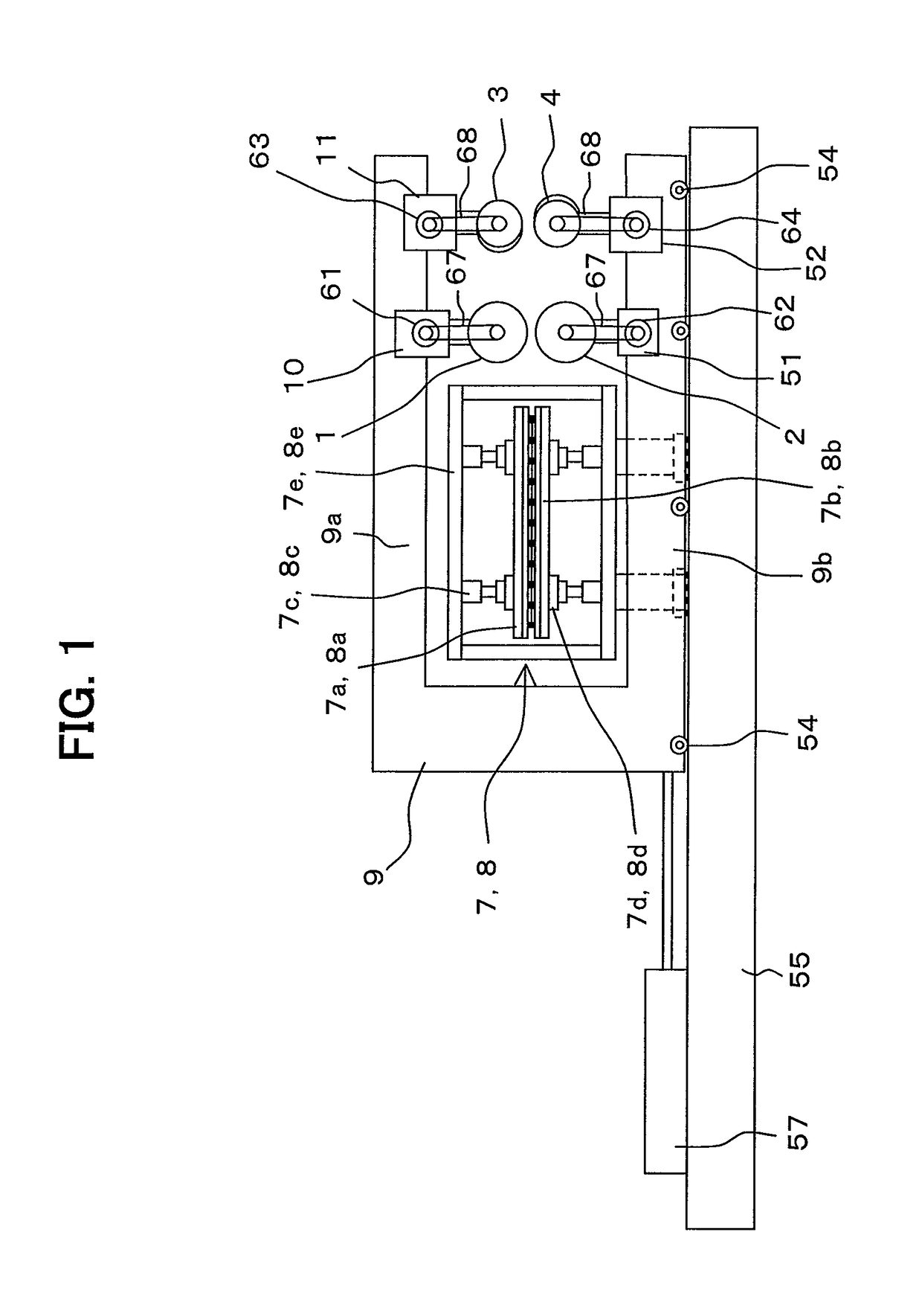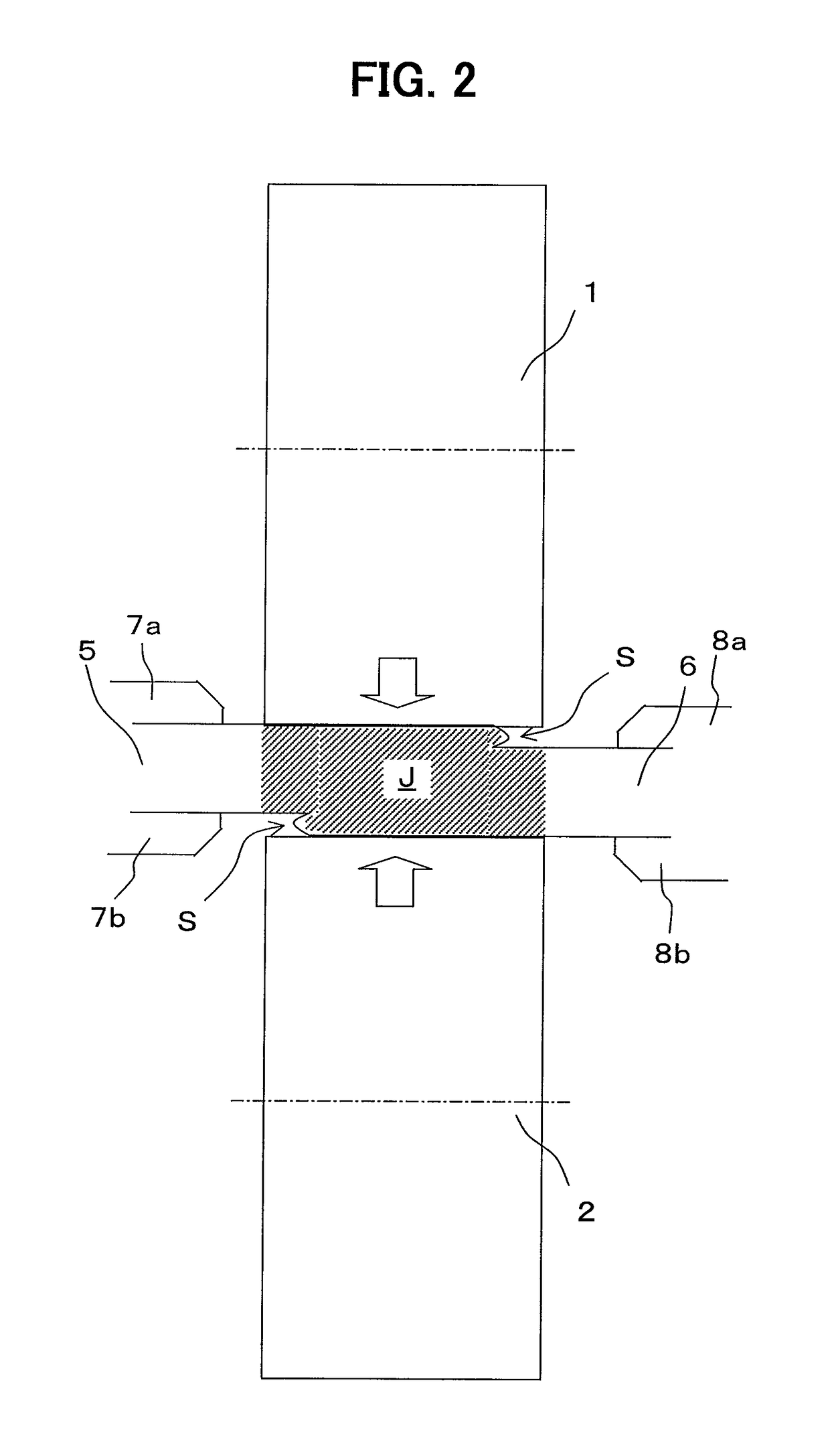Metal plate joining method and apparatus
a metal plate and jointing technology, applied in non-electric welding apparatus, welding/cutting auxillary devices, auxillary welding devices, etc., can solve the problems of increasing the method cannot roll the joint portion to a level corresponding to the thickness of the base material, etc., to reduce the increase of the thickness of the joint portion, reduce the step gradient, and smooth the step
- Summary
- Abstract
- Description
- Claims
- Application Information
AI Technical Summary
Benefits of technology
Problems solved by technology
Method used
Image
Examples
Embodiment Construction
[0107]Embodiments of the present invention will hereinafter be described with reference to the drawings. A metal plate of the embodiments is described taking a cold rolling for steel product plant as an example.
[0108]FIG. 1 is a schematic view of a metal plate joining apparatus according to an embodiment of the present invention. The present embodiment corresponds to the case where the present invention is applied to a mash seam welder.
[0109]Referring to FIG. 1, a metal plate joining apparatus according to the embodiment includes a pair of upper and lower electrode wheels 1, 2, a pair of upper and lower pressure rollers 3, 4, entry side and delivery side clamp devices 7, 8, a carriage frame 9, an electrode wheel pressing device 10, and a pressure roller pressing device 11. The electrode wheel pressing device 10 and the pressure roller pressing device 11 are hydraulic cylinders, for example. The upper electrode wheel 1 and the upper pressure roller 3 are supported by an upper horizon...
PUM
| Property | Measurement | Unit |
|---|---|---|
| temperature | aaaaa | aaaaa |
| temperature | aaaaa | aaaaa |
| temperatures | aaaaa | aaaaa |
Abstract
Description
Claims
Application Information
 Login to View More
Login to View More - R&D
- Intellectual Property
- Life Sciences
- Materials
- Tech Scout
- Unparalleled Data Quality
- Higher Quality Content
- 60% Fewer Hallucinations
Browse by: Latest US Patents, China's latest patents, Technical Efficacy Thesaurus, Application Domain, Technology Topic, Popular Technical Reports.
© 2025 PatSnap. All rights reserved.Legal|Privacy policy|Modern Slavery Act Transparency Statement|Sitemap|About US| Contact US: help@patsnap.com



